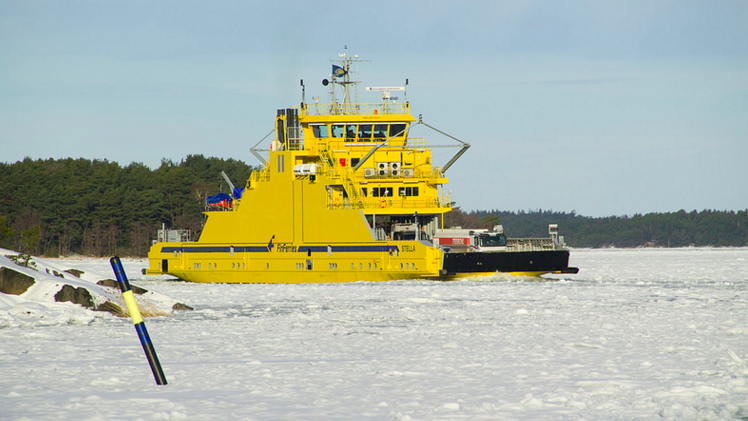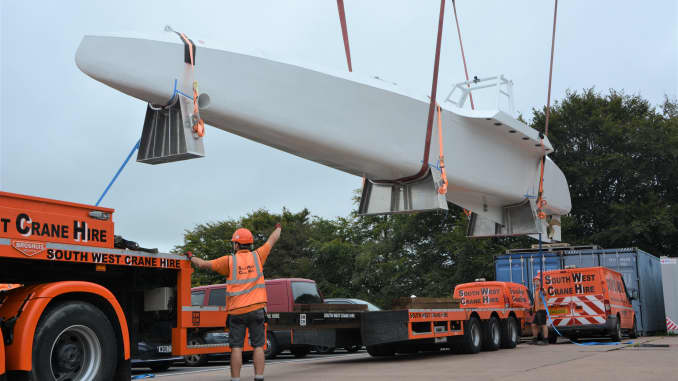Torgeir Sterri, Regional Manager Western Europe and Bjørn-Johan Vartdal, Maritime Digital Director at DNV GL – Maritime discussed developments in autonomous shipping in an interview with The Motorship
While the recent Covid-19 pandemic has accelerated the adoption of digitalisation and Big Data tools both within DNV GL – Maritime itself, and among customers interested in tools such as DATE, eCERTS and remote surveys, a second potentially disruptive technology – autonomous vessels technology – remains some way off reshaping the maritime industry, Torgeir Sterri noted.
Sterri noted that while accelerating research into autonomous technology had led to progress, the challenges connected with autonomous vessels need to be acknowledged.
These challenges were not merely the strains caused by the pace of technological progress outpacing slower moving developments in standards and guidance, or issues around liability, or the location of decision making for remotely operated machinery.
Rather, they were issues around how to ensure that technology meet safety requirements. Sterri emphasised that DNV GL’s prime concern remained ensuring safety at sea.
“It needs to be as safe as – if not better than – what we have today.”
DNV GL published its first class guideline covering autonomous and remotely operated ships, and its position paper into remote controlled and autonomous ships in the maritime industry back in September 2018, but the pace of development meant rules remains a work in progress, Bjørn-Johan Vartdal added.
“We have the technology today to run autonomous ships, but [not] to ensure that they are sufficiently reliable,” Vartdal said.
DNV GL is continuing to support a product assurance approach rather than a process assurance approach to ensuring the safety of autonomous vessels and systems.
“We would like regulators (IMO or flag states) to define the required safety level for a technology, and for class to come up with the methodologies to define that the required safety level has been met,” Vartdal said.
“Our job as a class society is to find a methodology to demonstrate that something that is designed or made by somebody is as safe or safer than what has been designed today.”
However, the product assurance approach has extended DNV GL’s safety assurance requirements into new areas, requiring new and highly complex methodologies to evaluate the reliability of autonomous systems.
“We are trying to assure that the technology is doing the job of a human in a sufficiently safe manner, which is a different task to ensuring the safety of a vessel’s hull or issuing type approval for a ship’s engine.”
“We have developed advanced simulator tools just for the purpose of evaluating the safety of an autonomous navigation system,” Vartdal noted. Such ‘software-in-the-loop’ solutions can test the reliability of the machine learning underpinning a navigation system in a variety of scenarios.
Research projects
DNV GL has been closely involved in several development projects, including a research project into the remote operation of machinery and automation systems (ROMAS).
With involvement in projects into semi-autonomous and autonomous projects as diverse as MacGregor’s autodocking solution and self-unloading cranes, Bjørn-Johan Vartdal offered a similarly realistic appraisal of autonomous shipping’s prospects.
The potential advantages of automating some functions has already been demonstrated. “We’ve already proven that the reliability and safety of operating machinery can be improved by moving part of the engine control ashore,” Vartdal said, citing the ROMAS project results.
However, full autonomy remained a distant prospect. “I don’t think that we will see anything revolutionary in this area very soon. To develop these technologies will require focus and time,” Vartdal concluded.
The pace of research shows no sign of relenting. Since June, DNV GL has been involved in the new Norwegian University of Science and Technology (NTNU) research centre into safe autonomous shipping, as well as a logistics project to use short-hop autonomous drones for goods distribution.
The new NTNU centre was planning to focus on how to guarantee safety and security in the use of autonomous vessels, alongside new business models and innovations in enabling technologies.
Interestingly, the NTNU research project includes a focus on both deep-sea autonomous shipping and short-sea projects, with separate projects focusing on remote engine room operation, autonomous docking and autonomous crane operations, for instance.
Sterri agreed that an iterative approach was likely, with fully autonomous vessels unlikely to enter service for quite some time, and semi-autonomous or product-level services likely to continue to enter the market first.
Source: motorship








